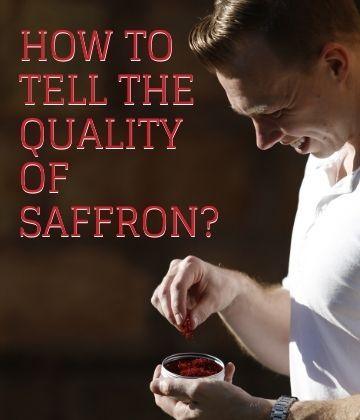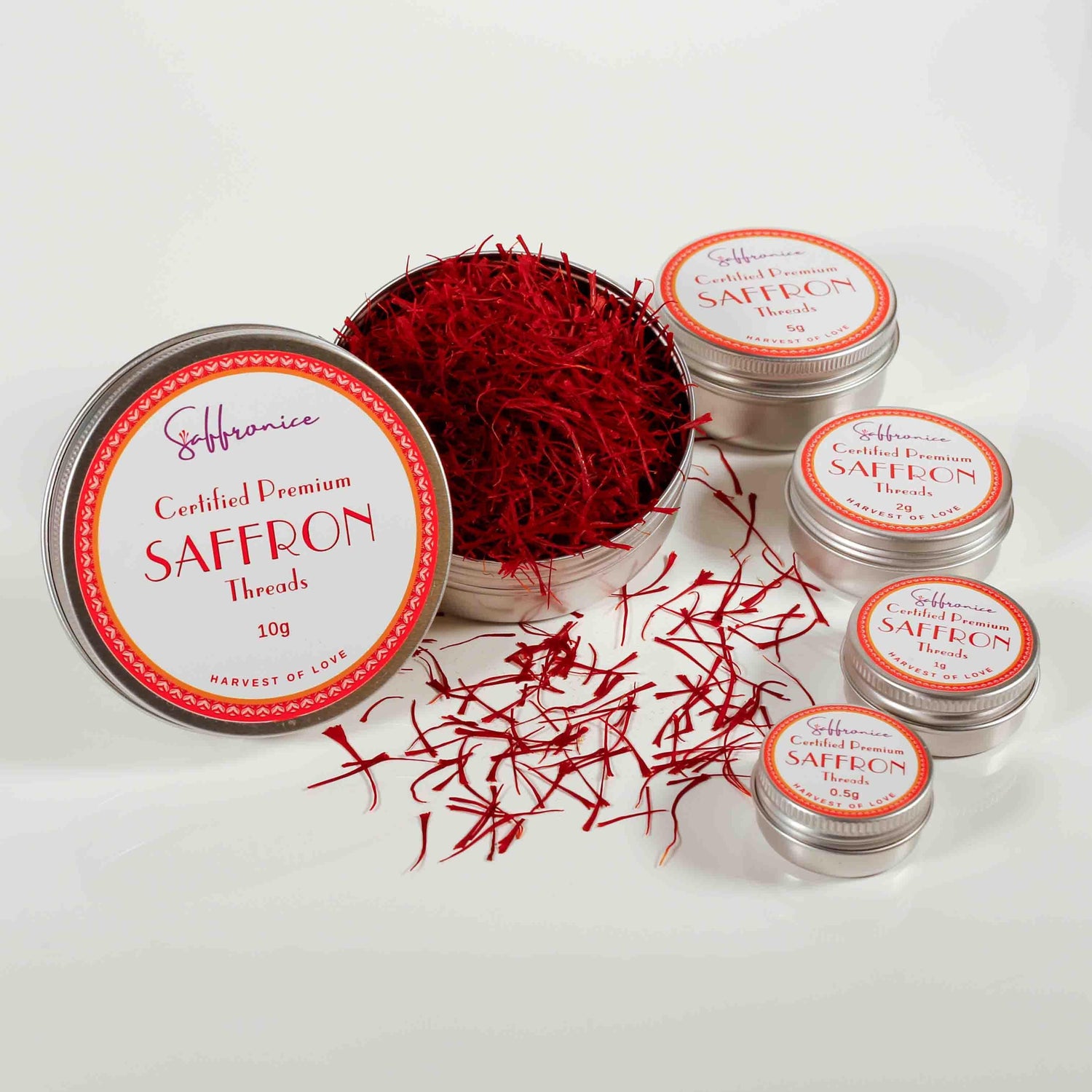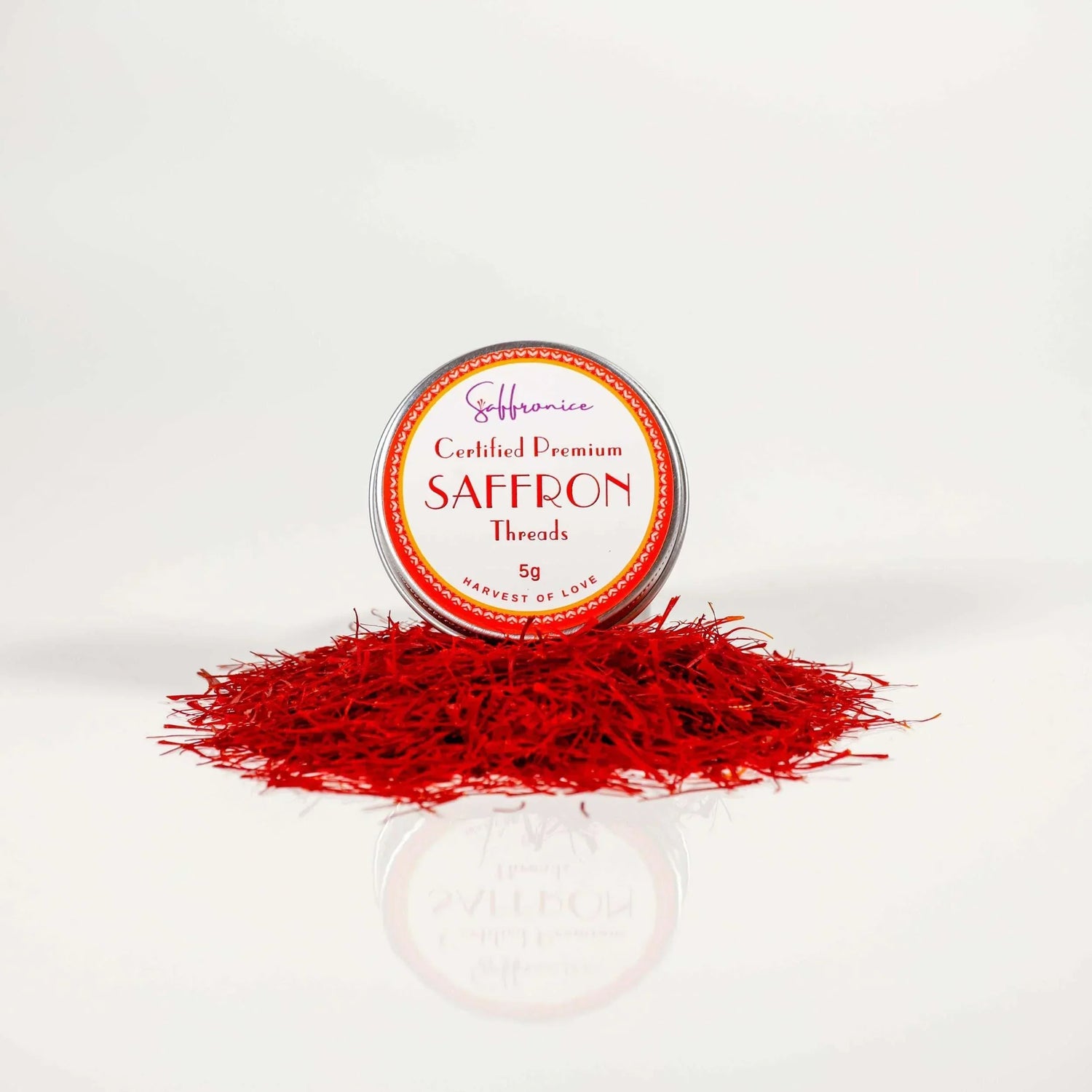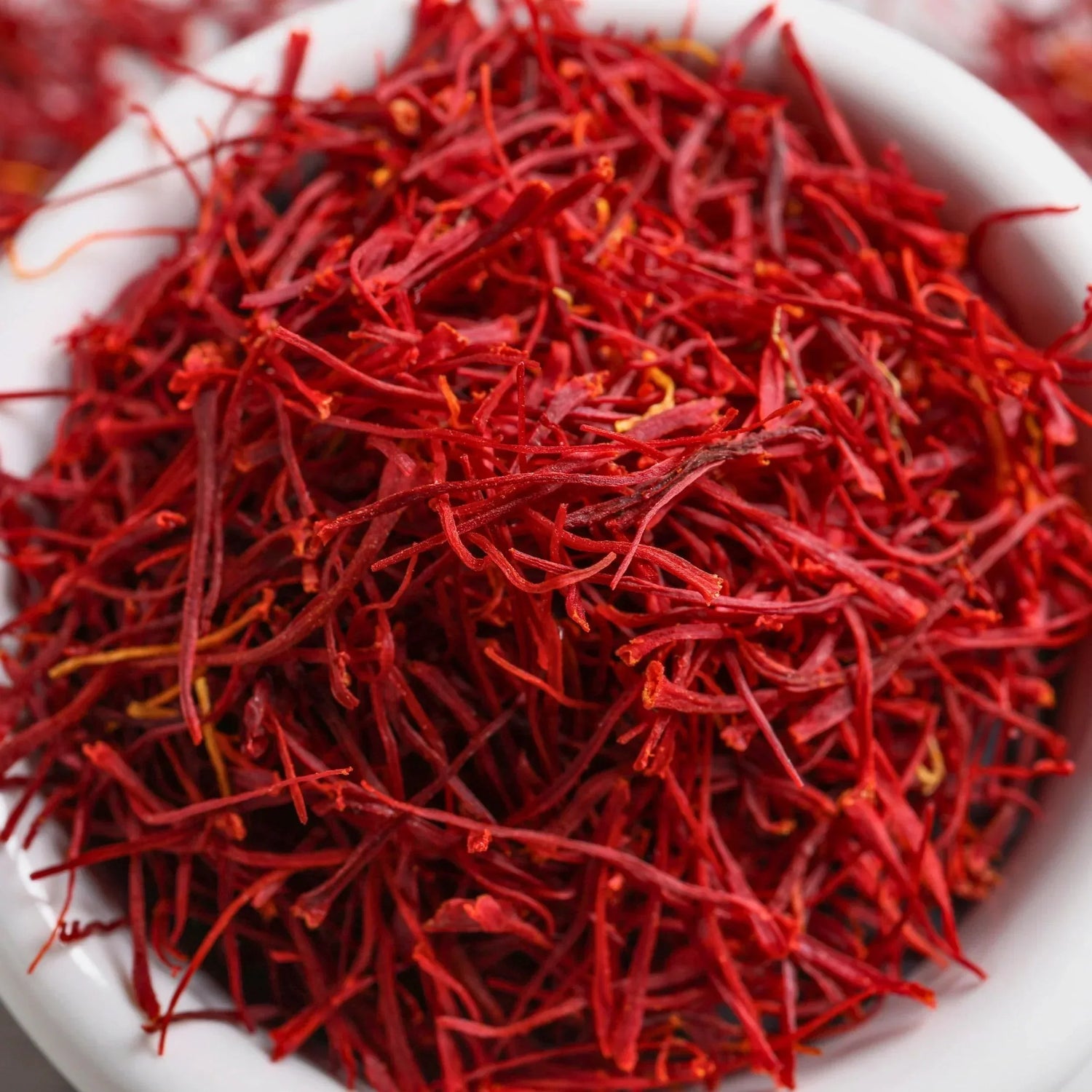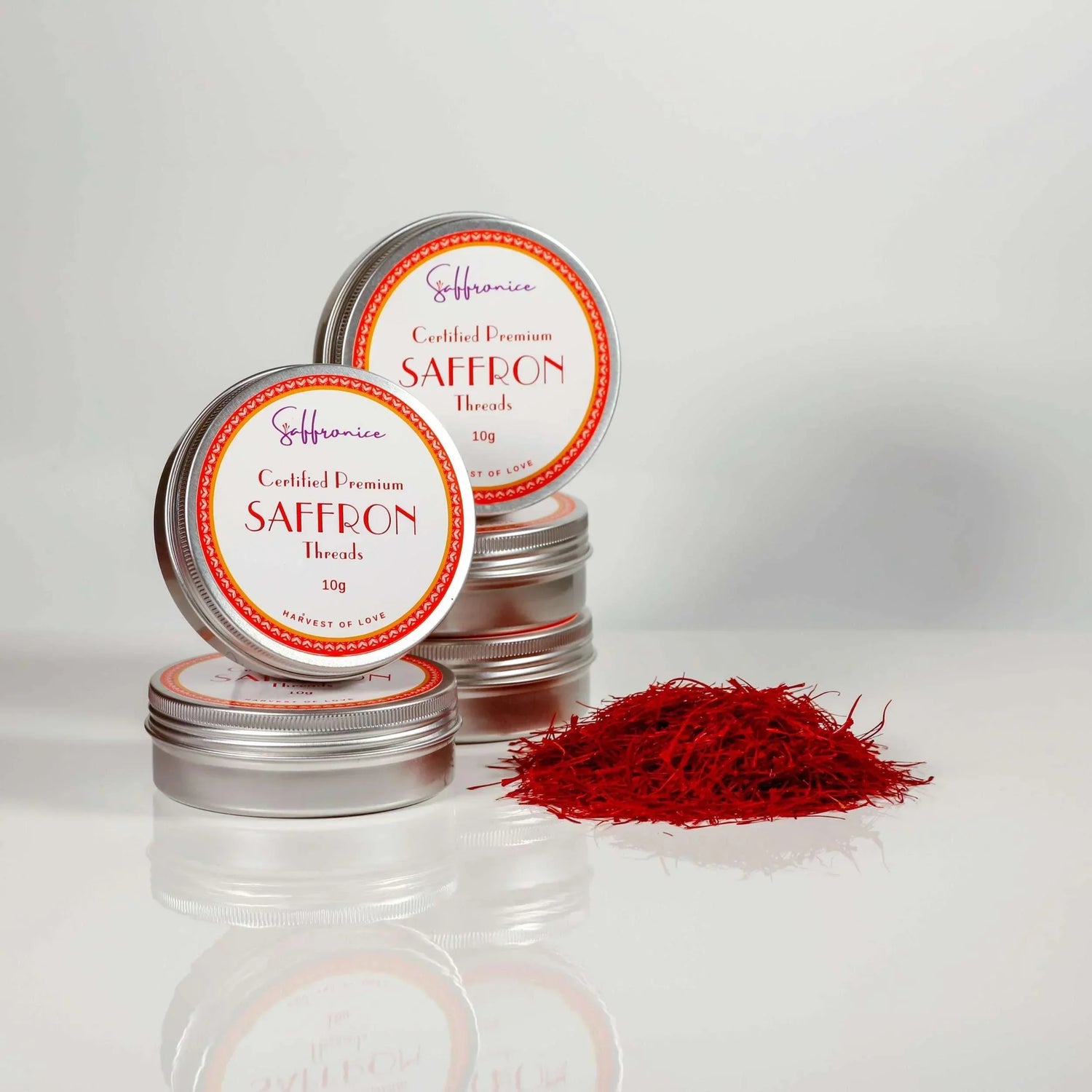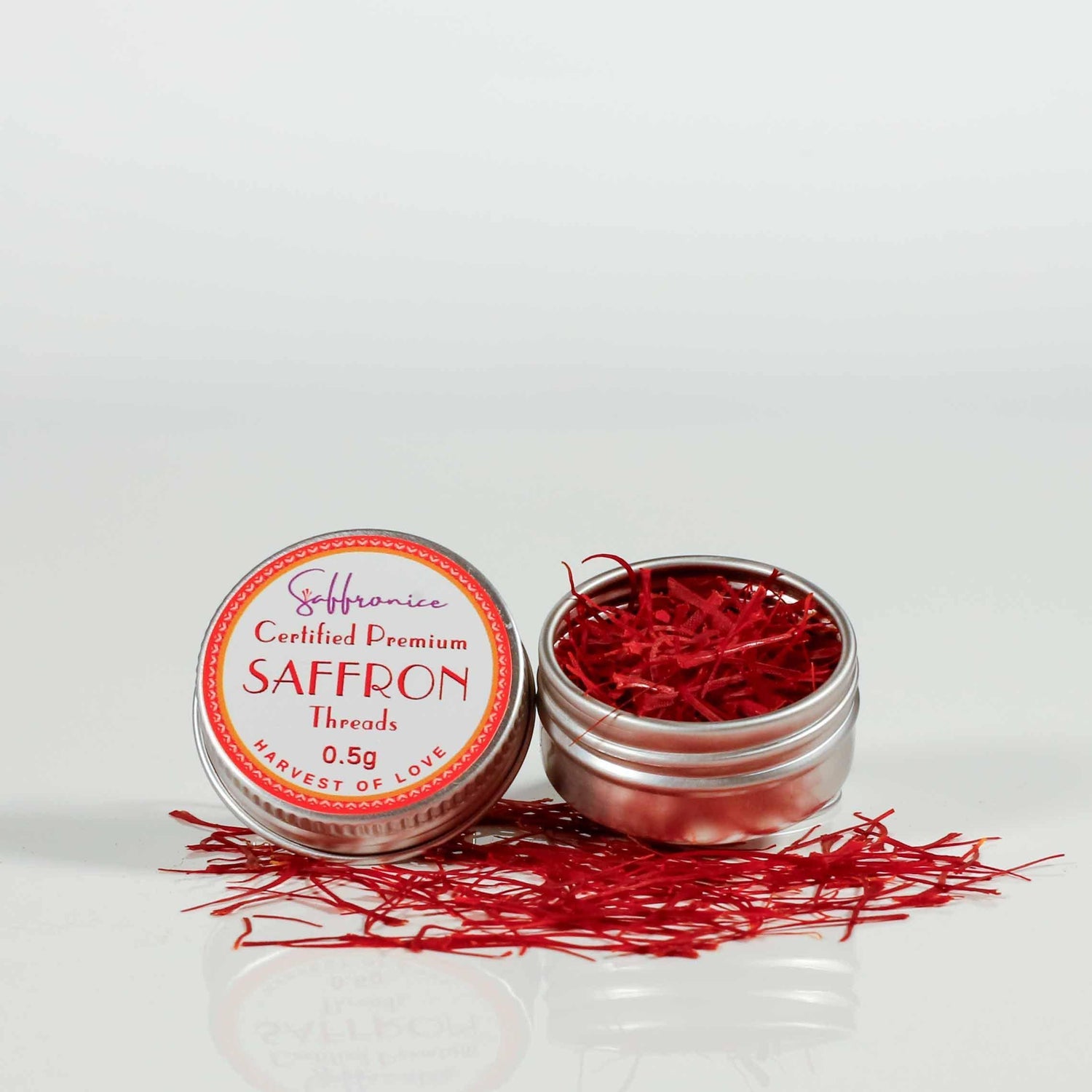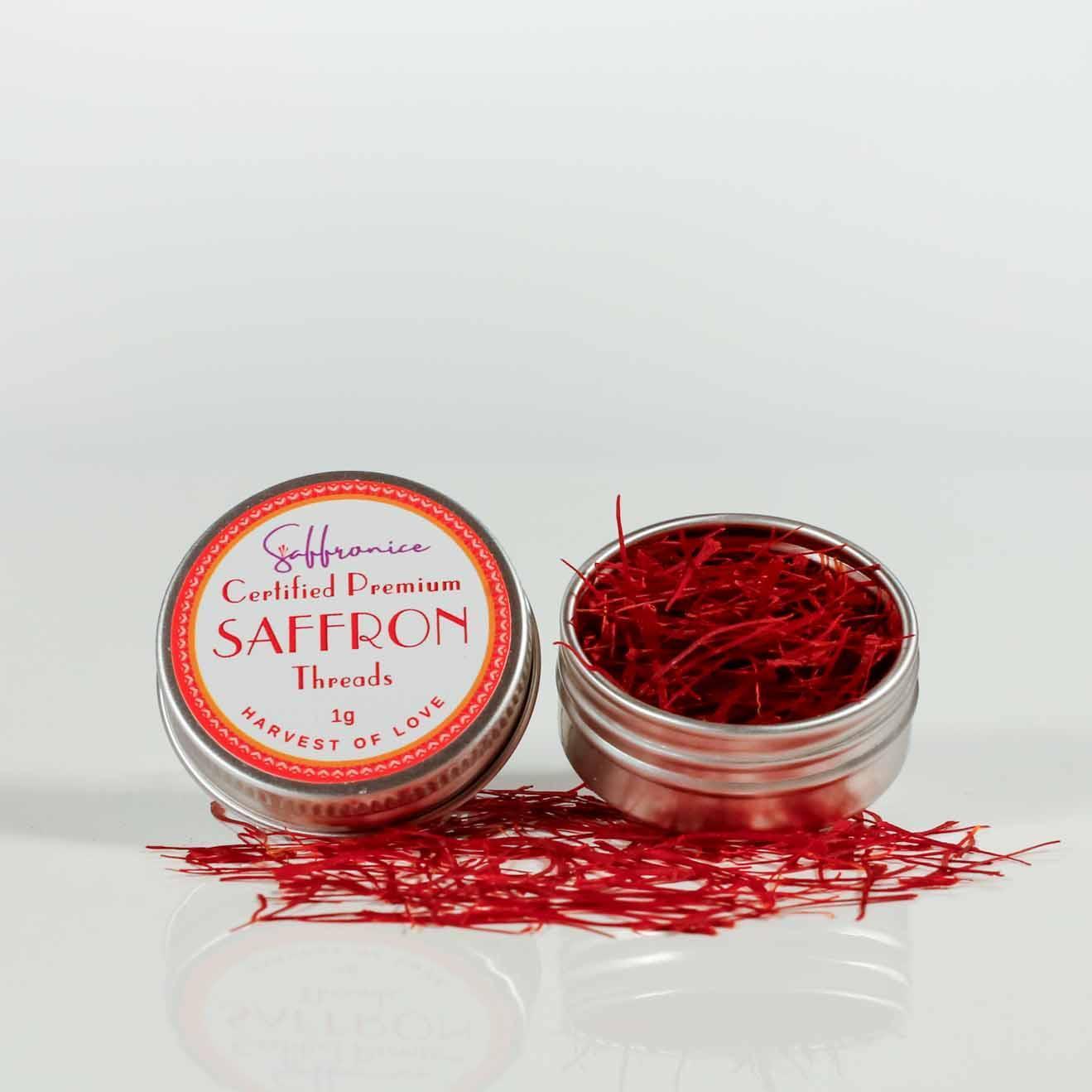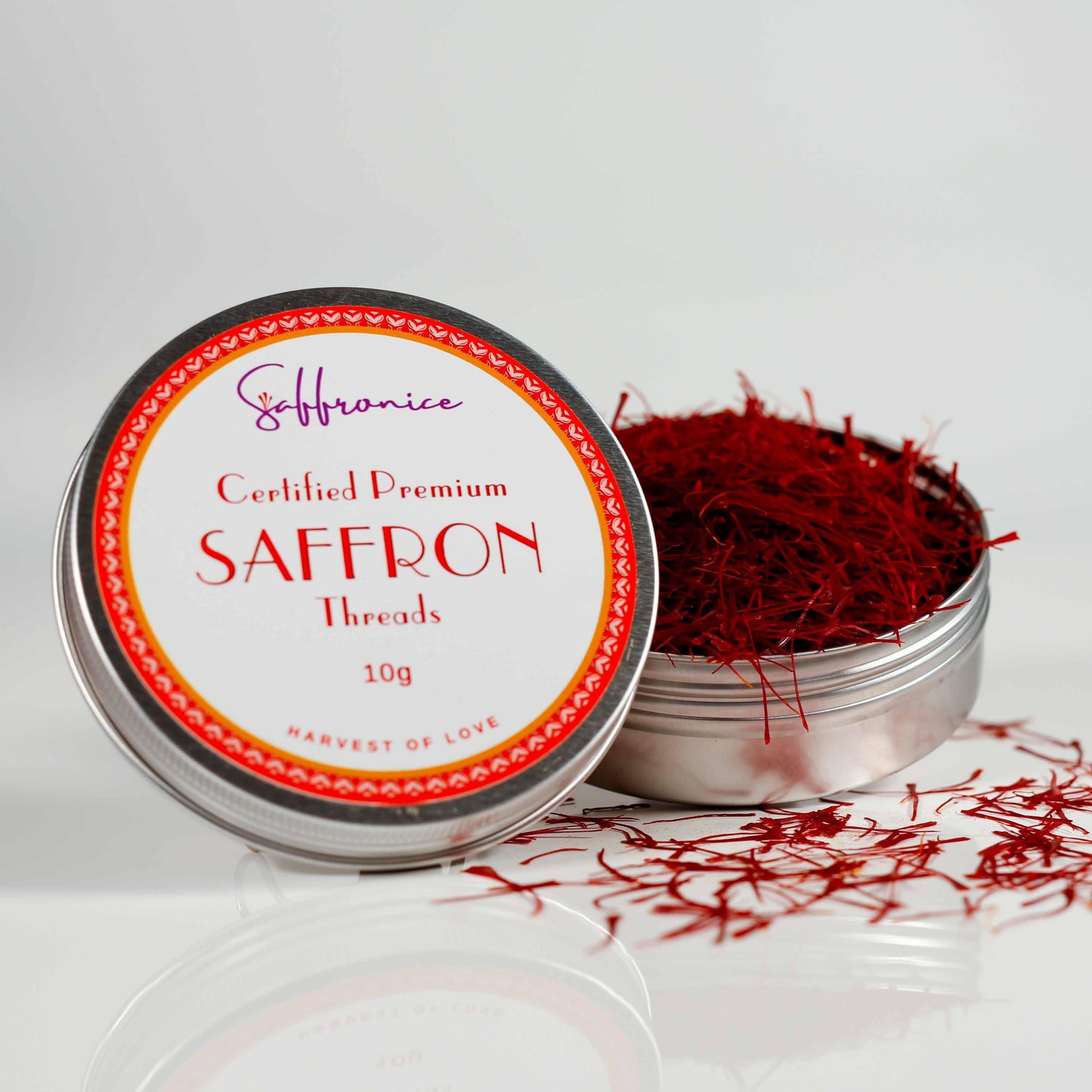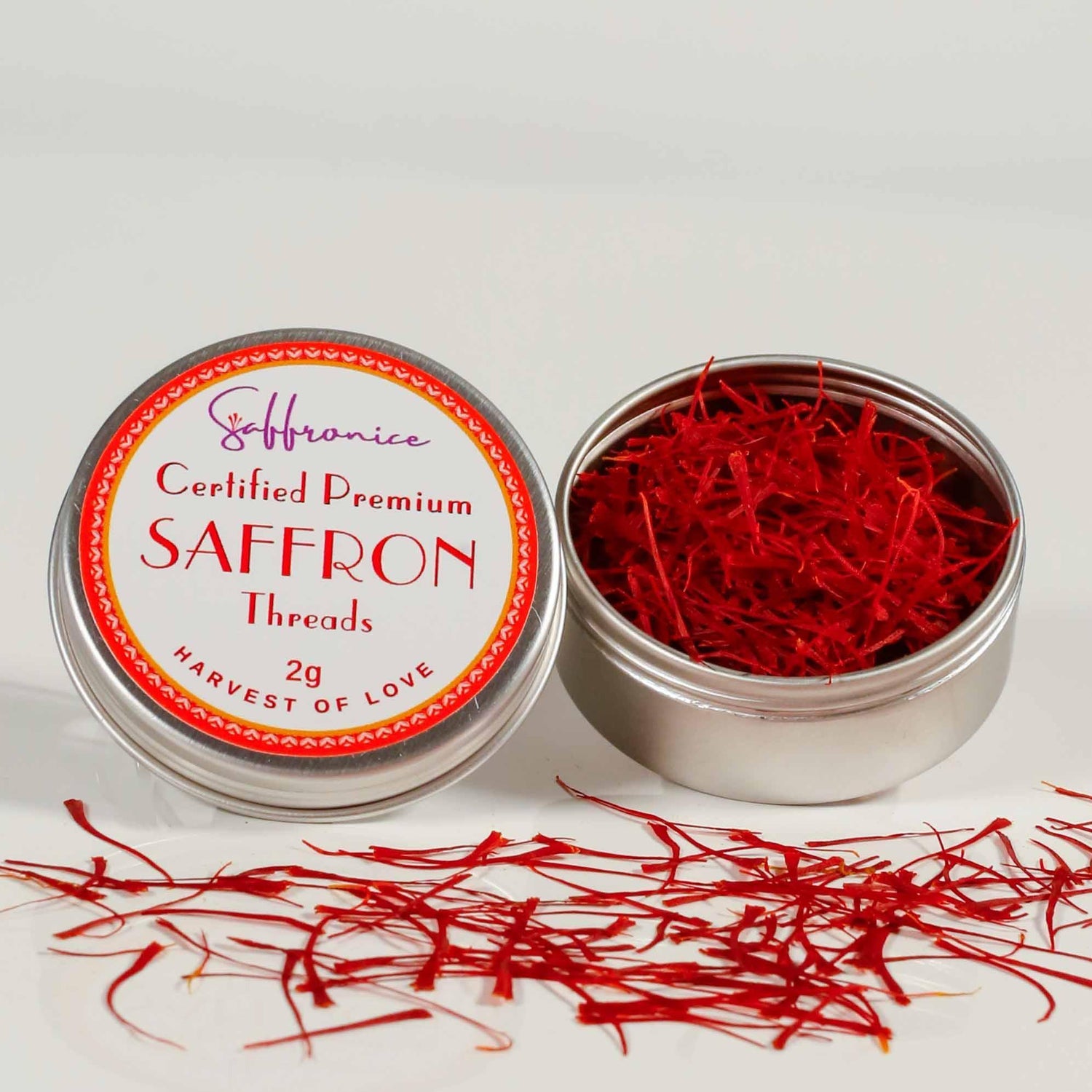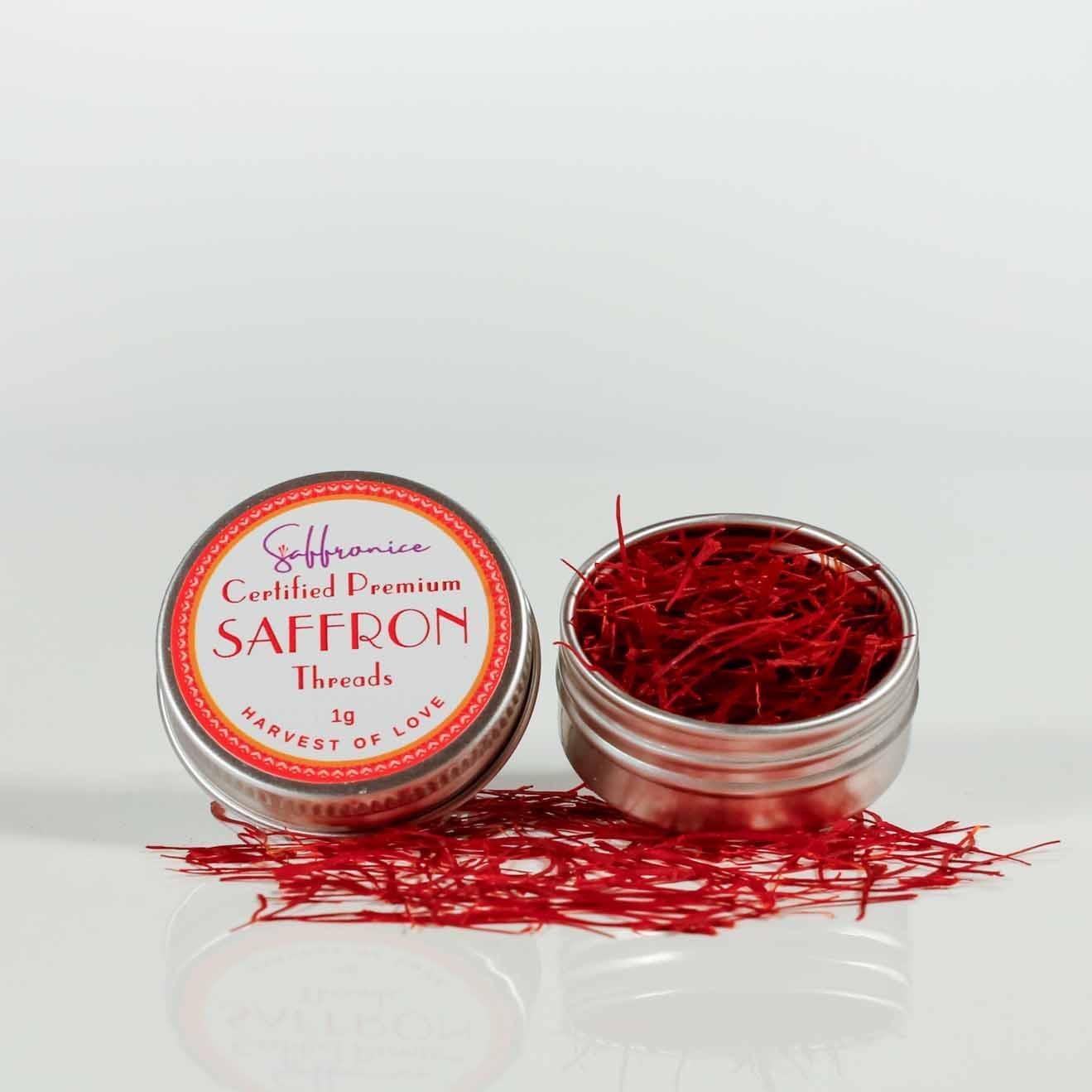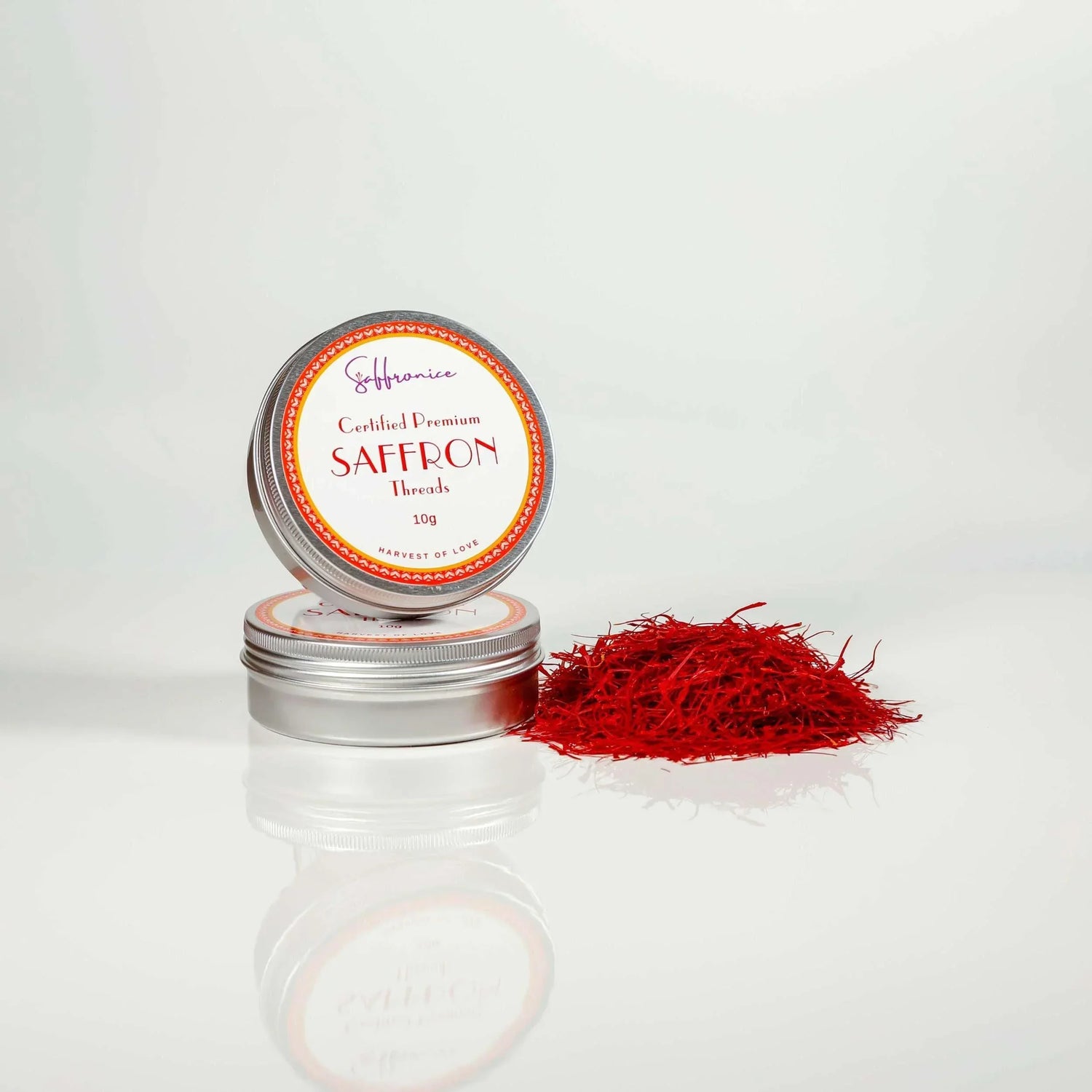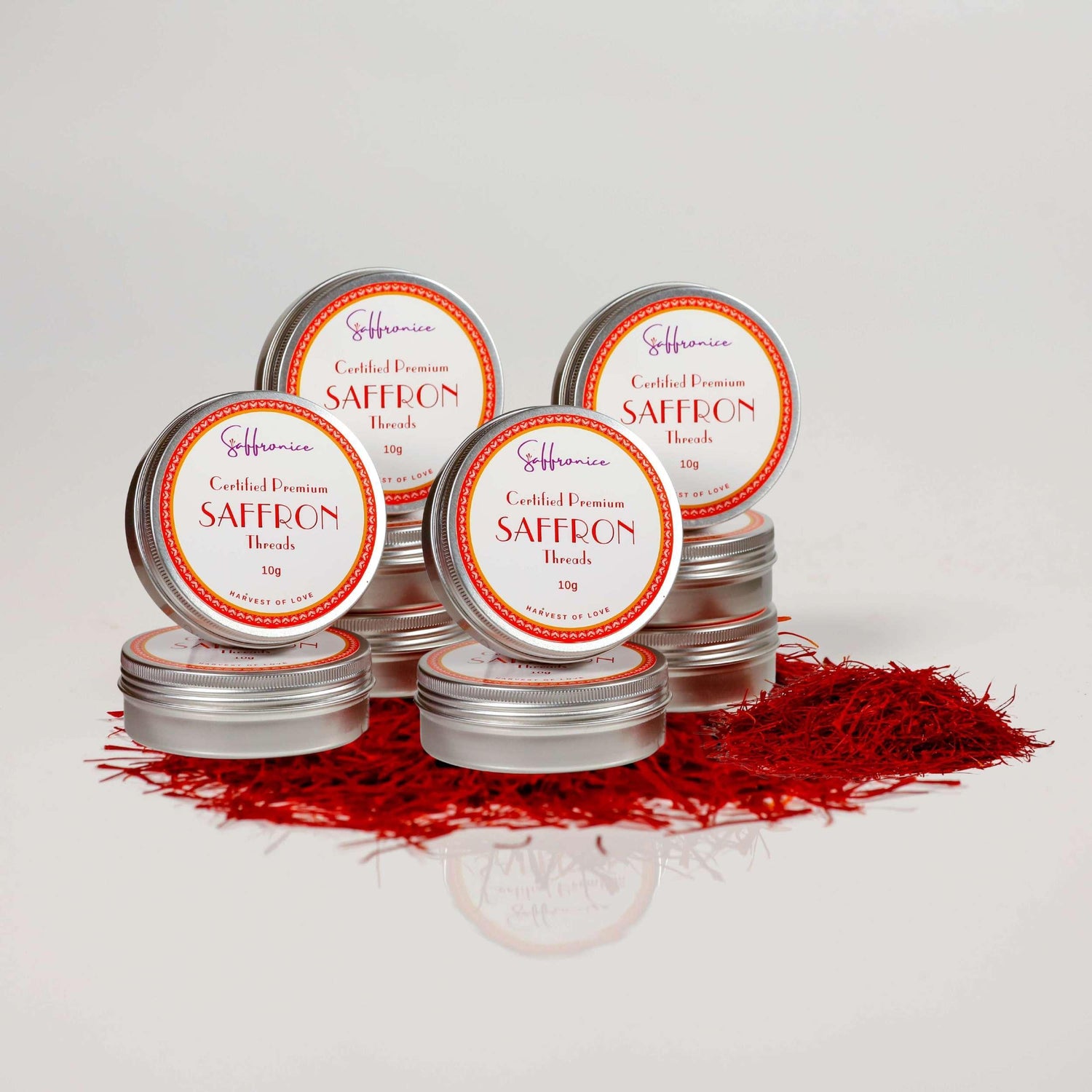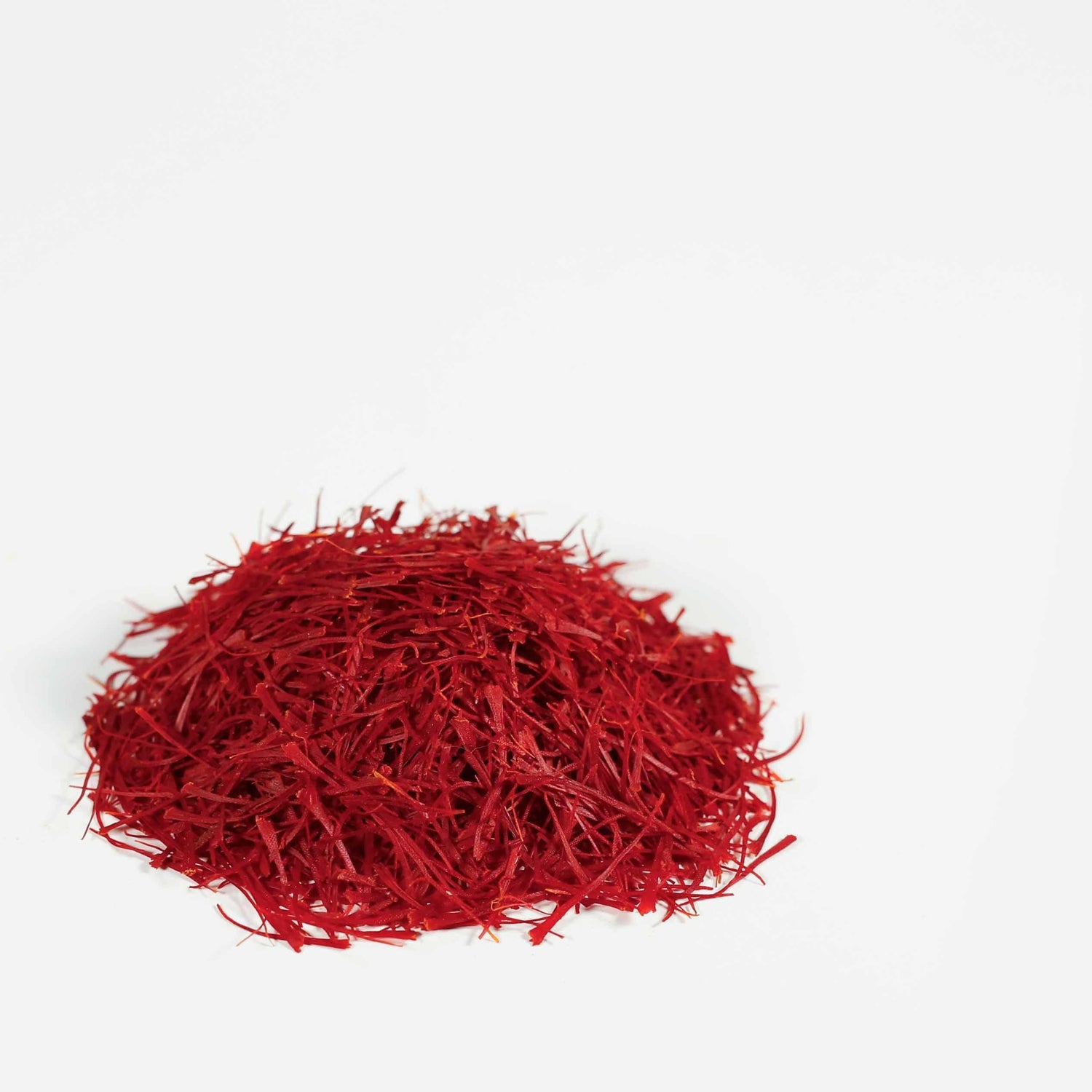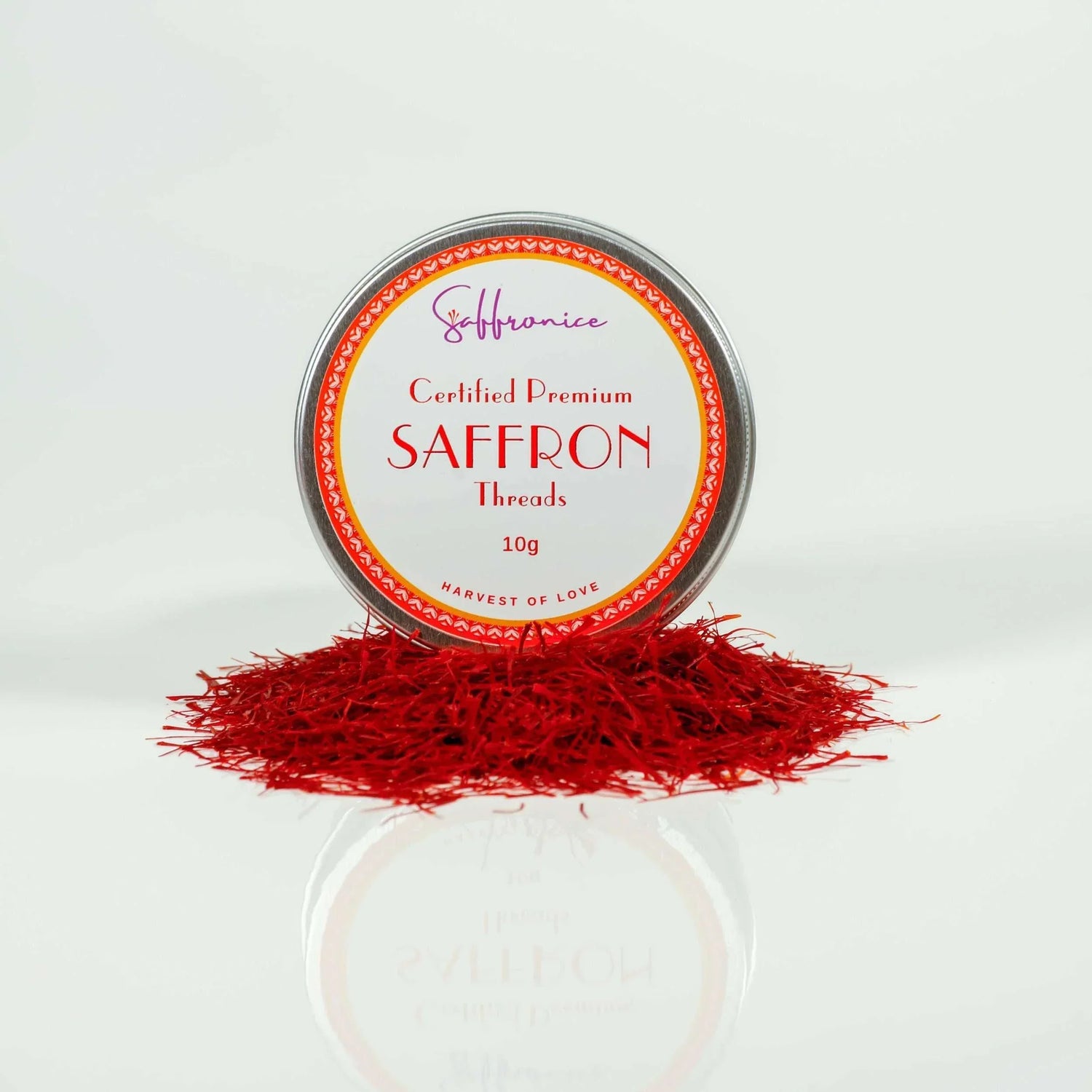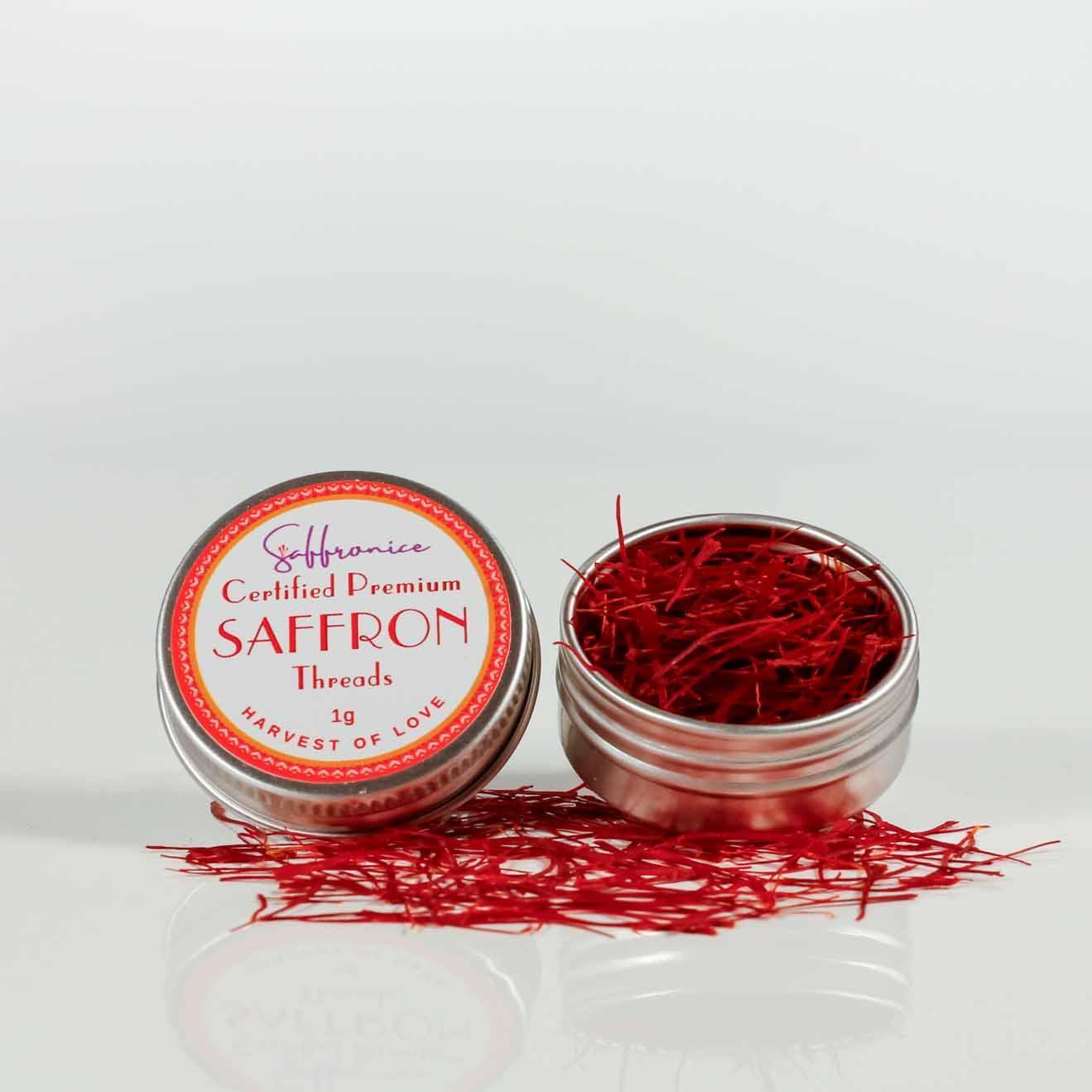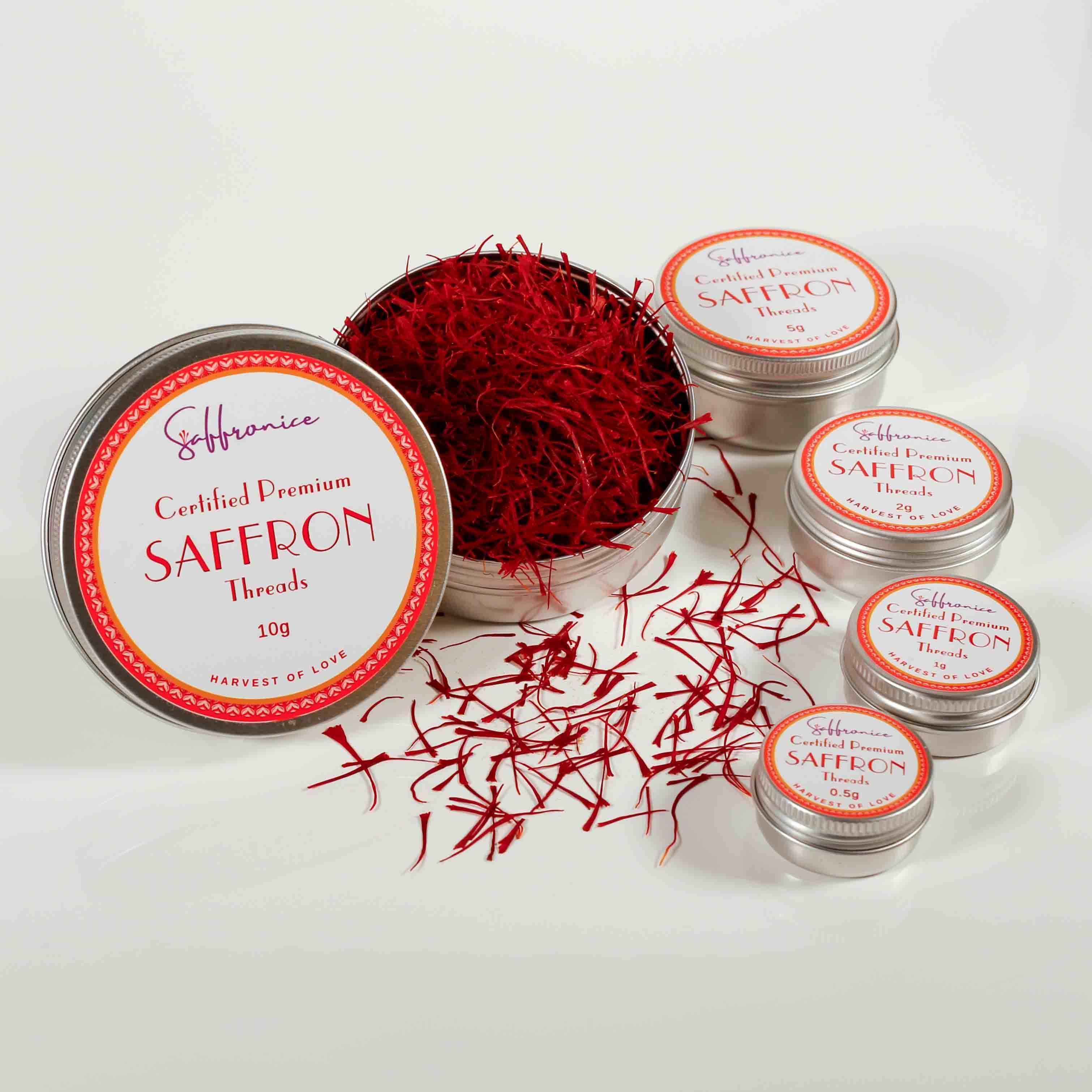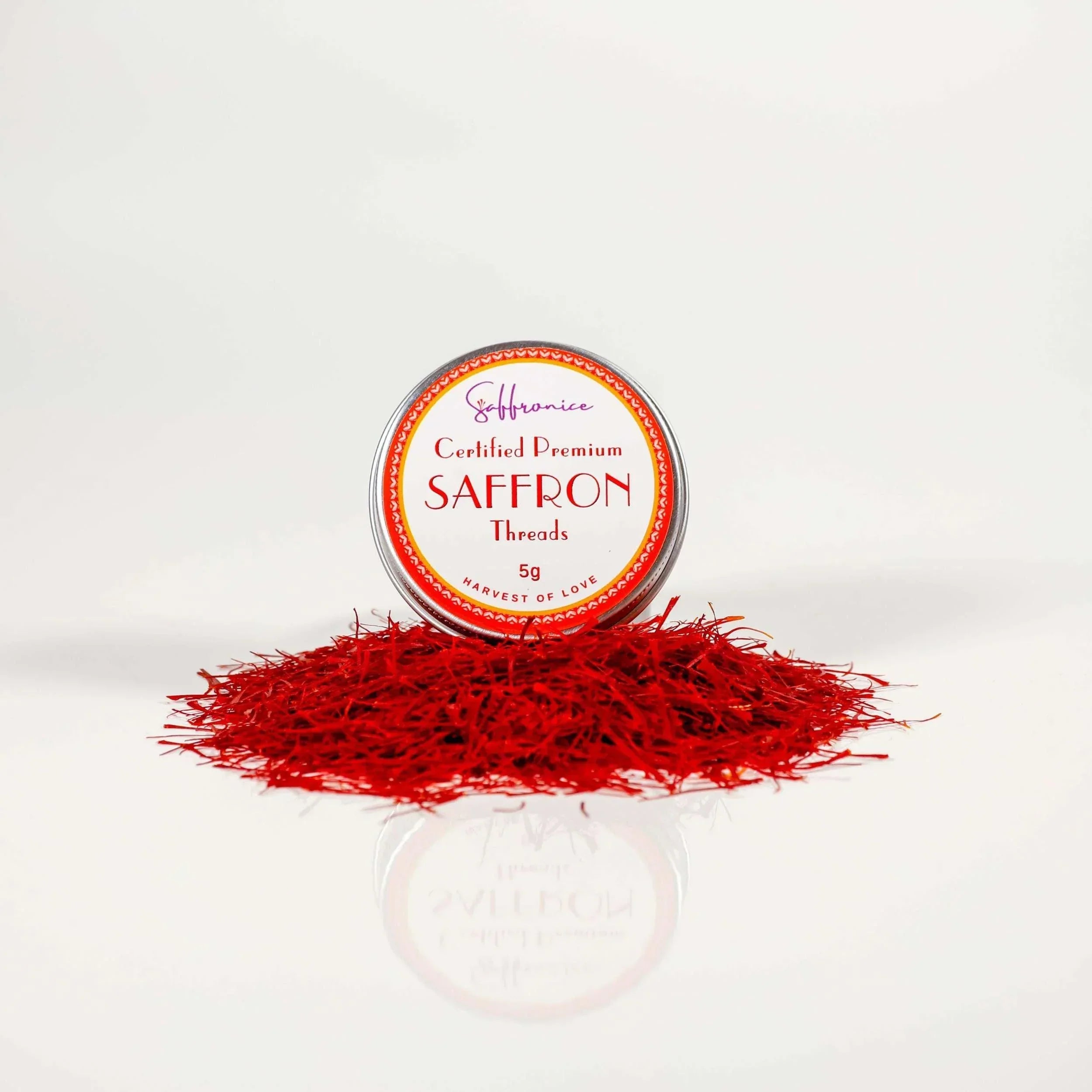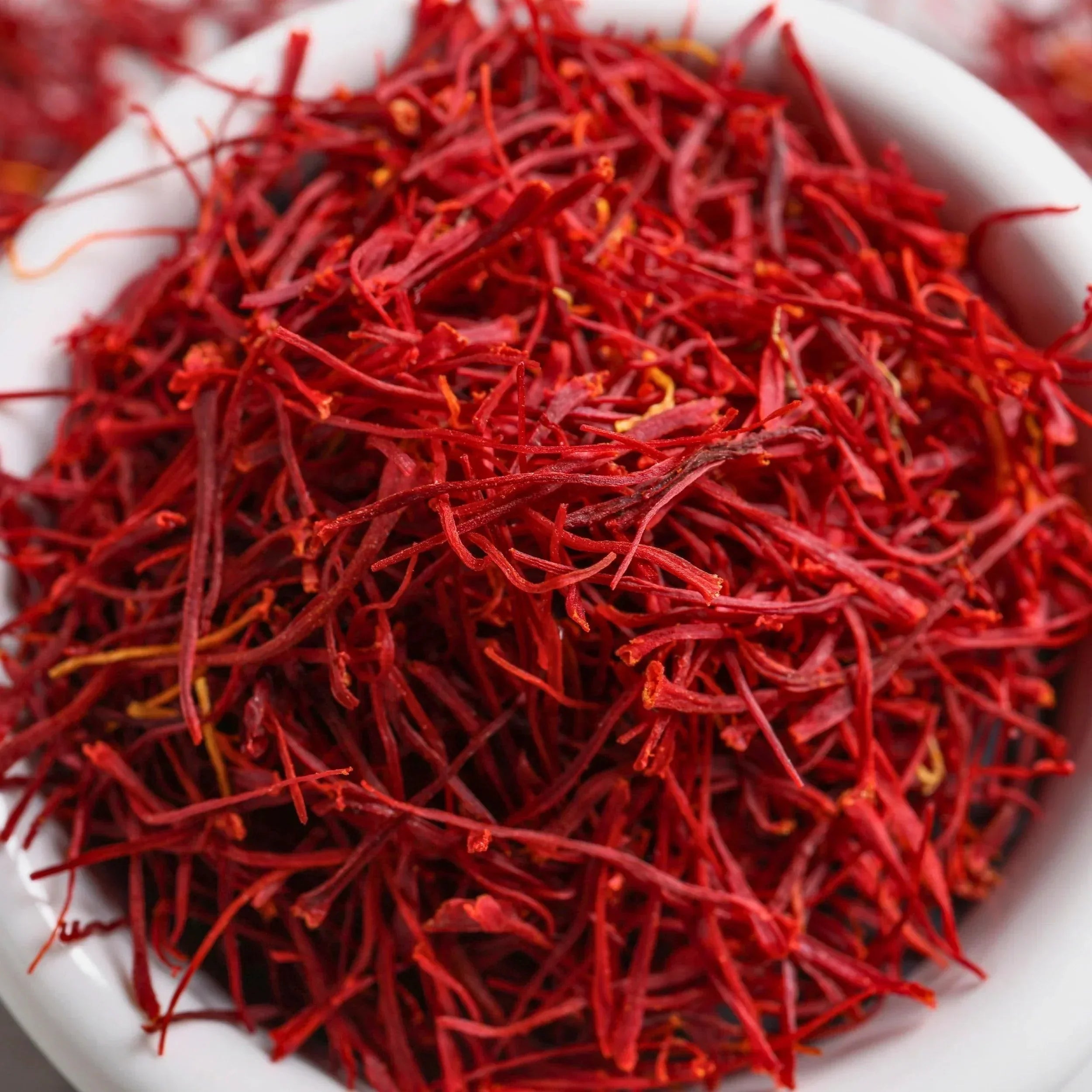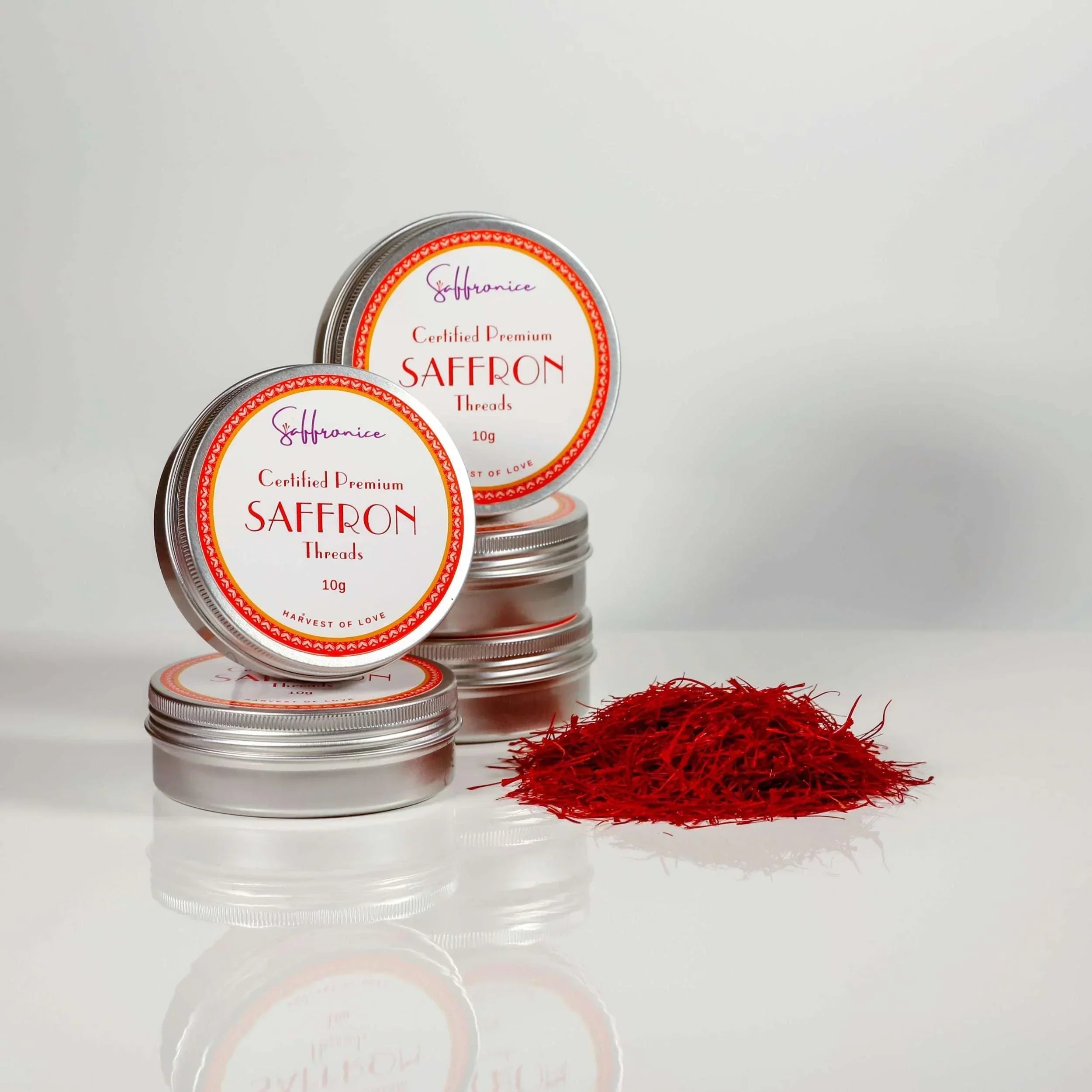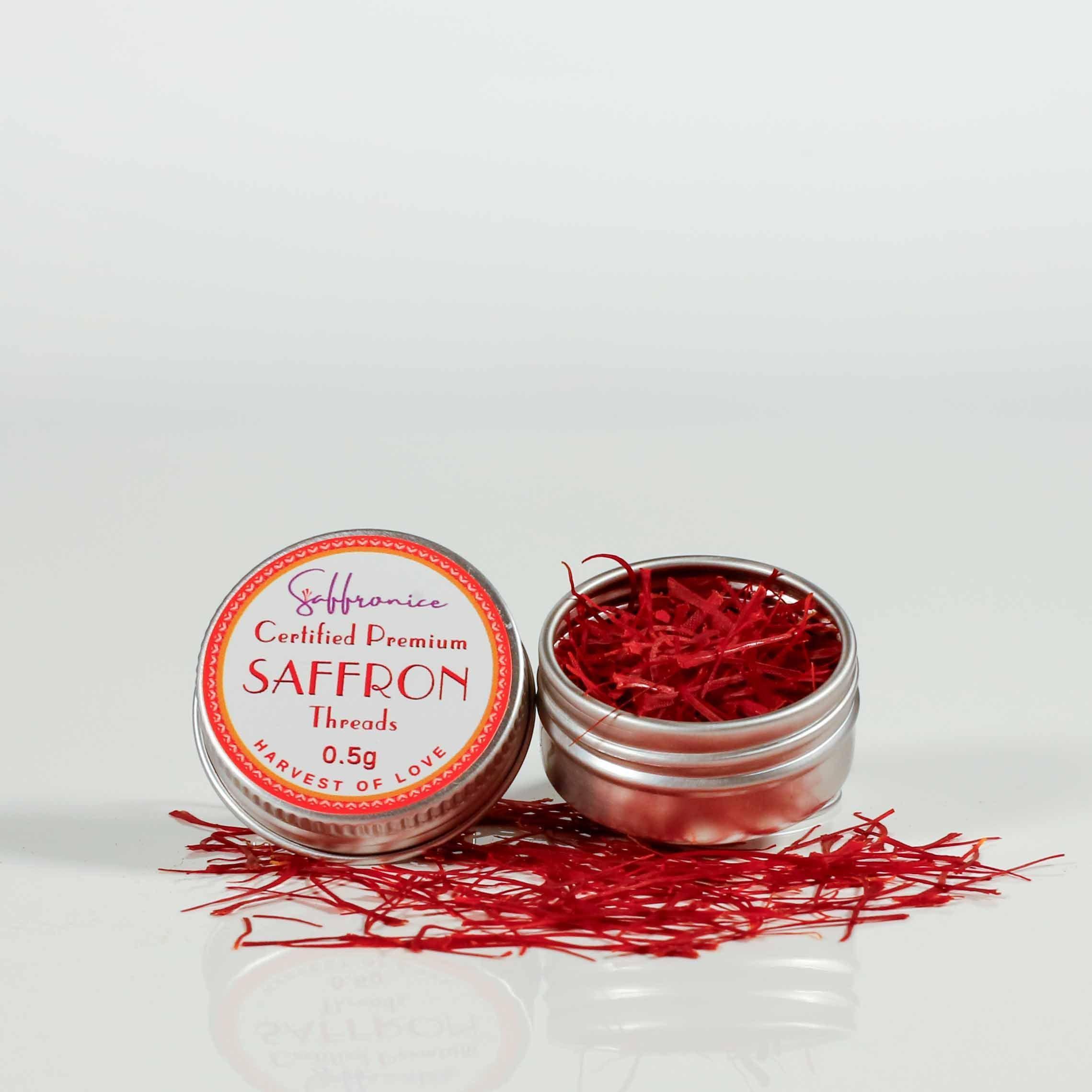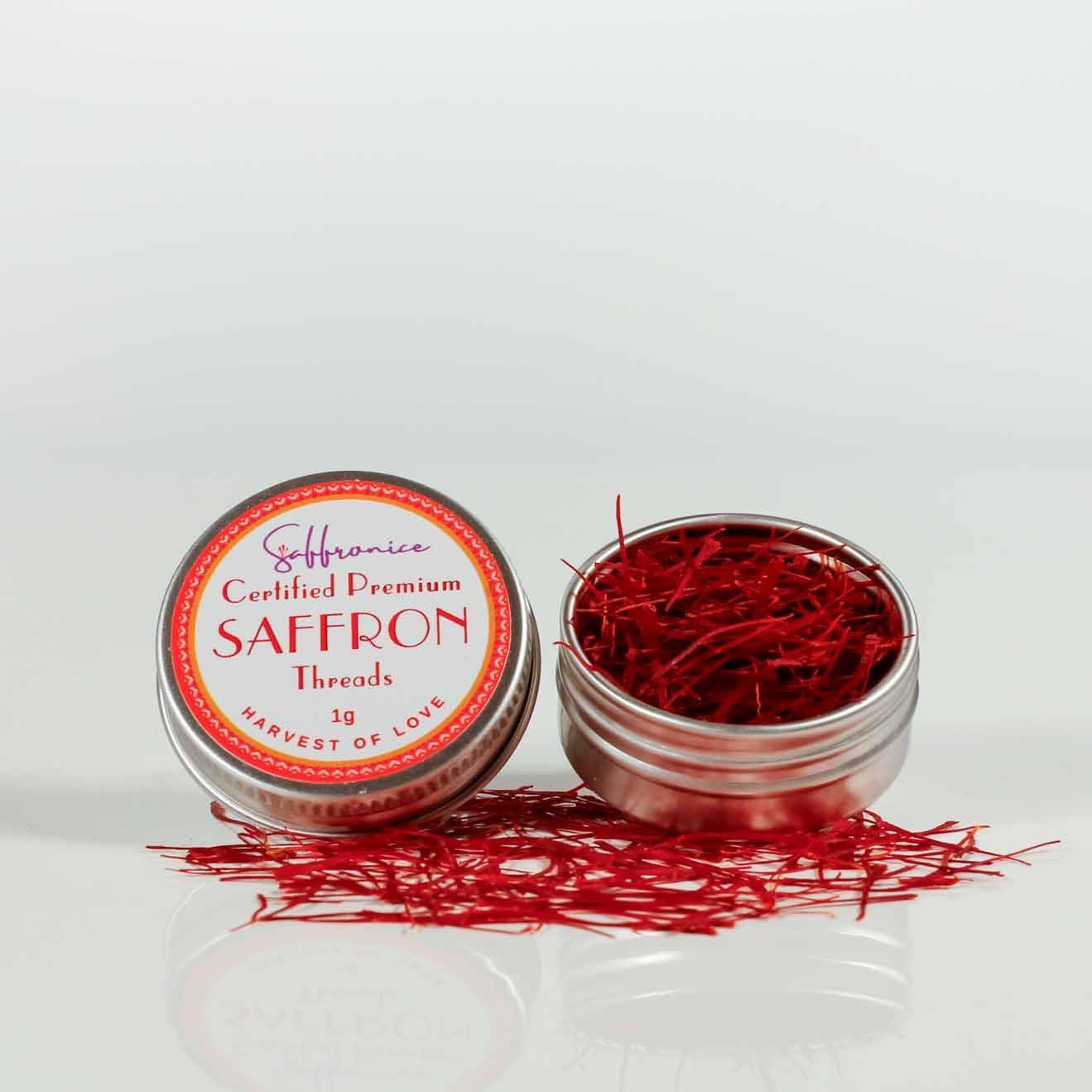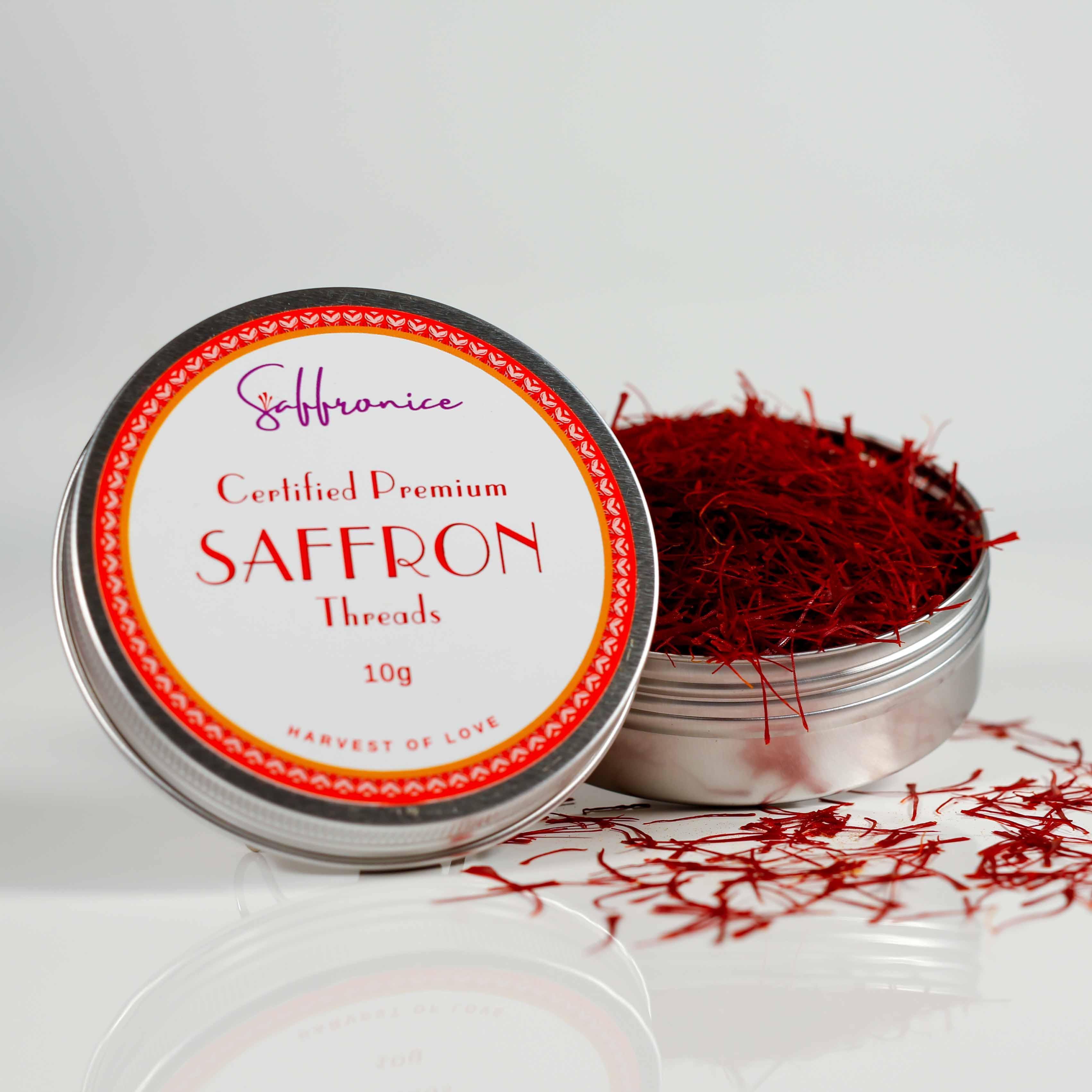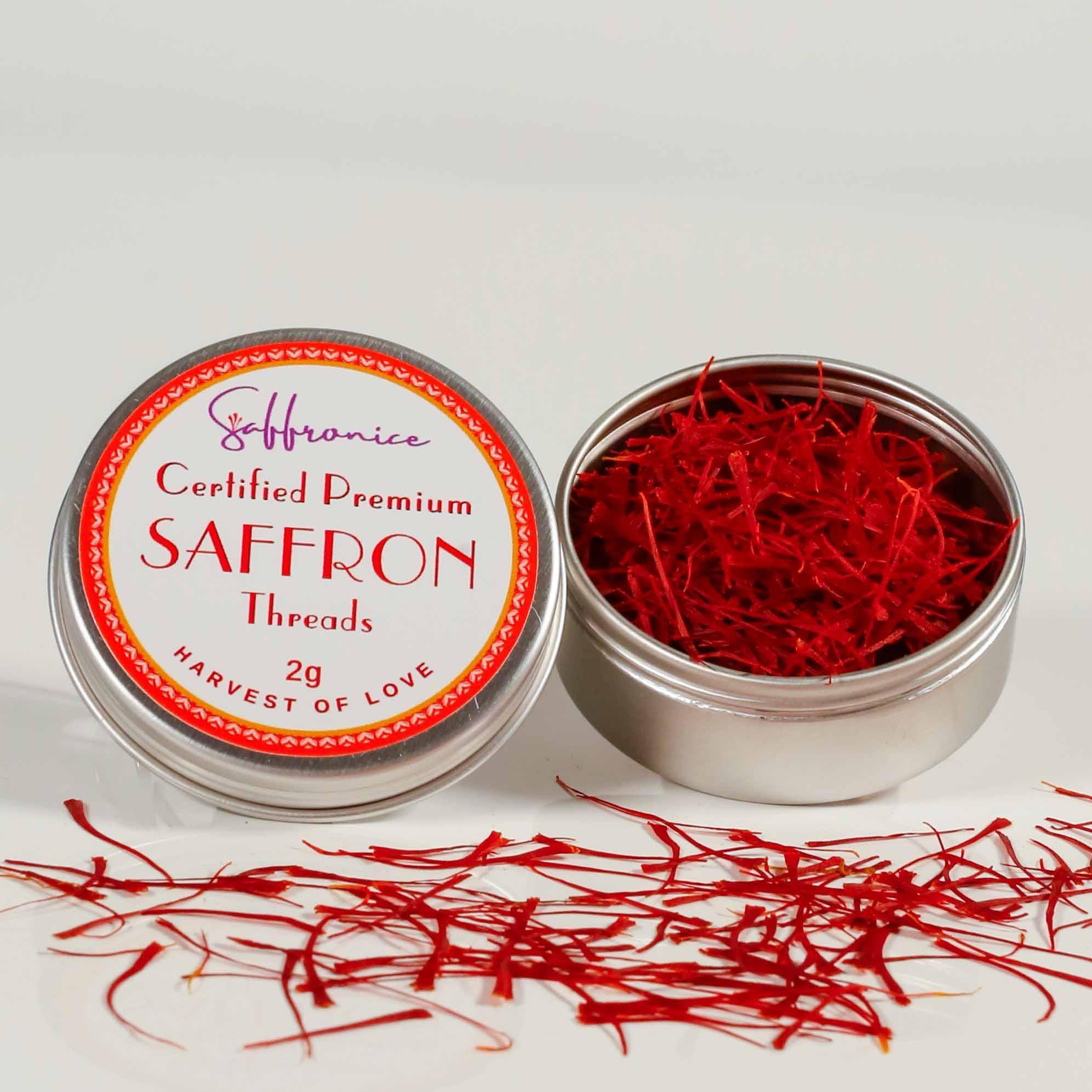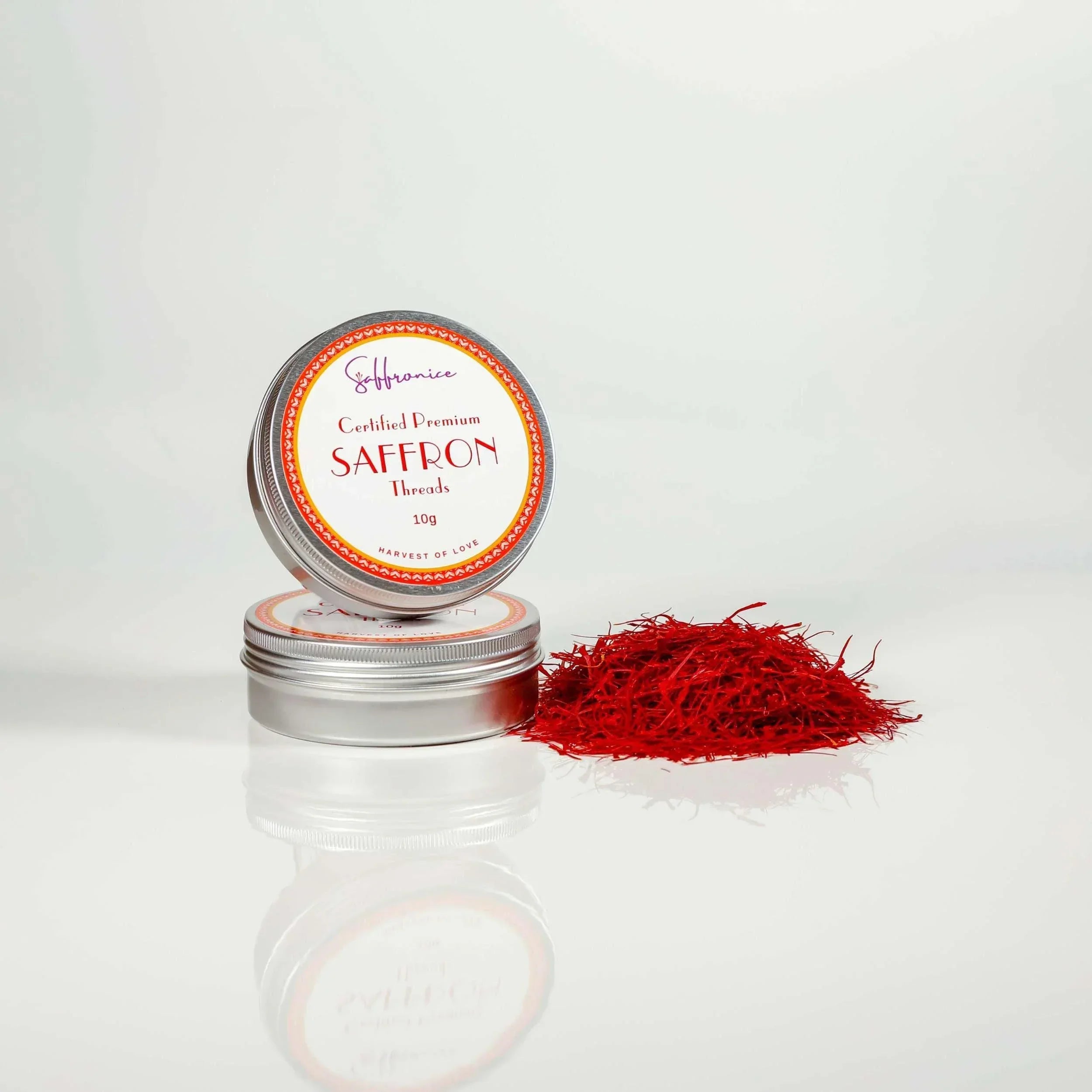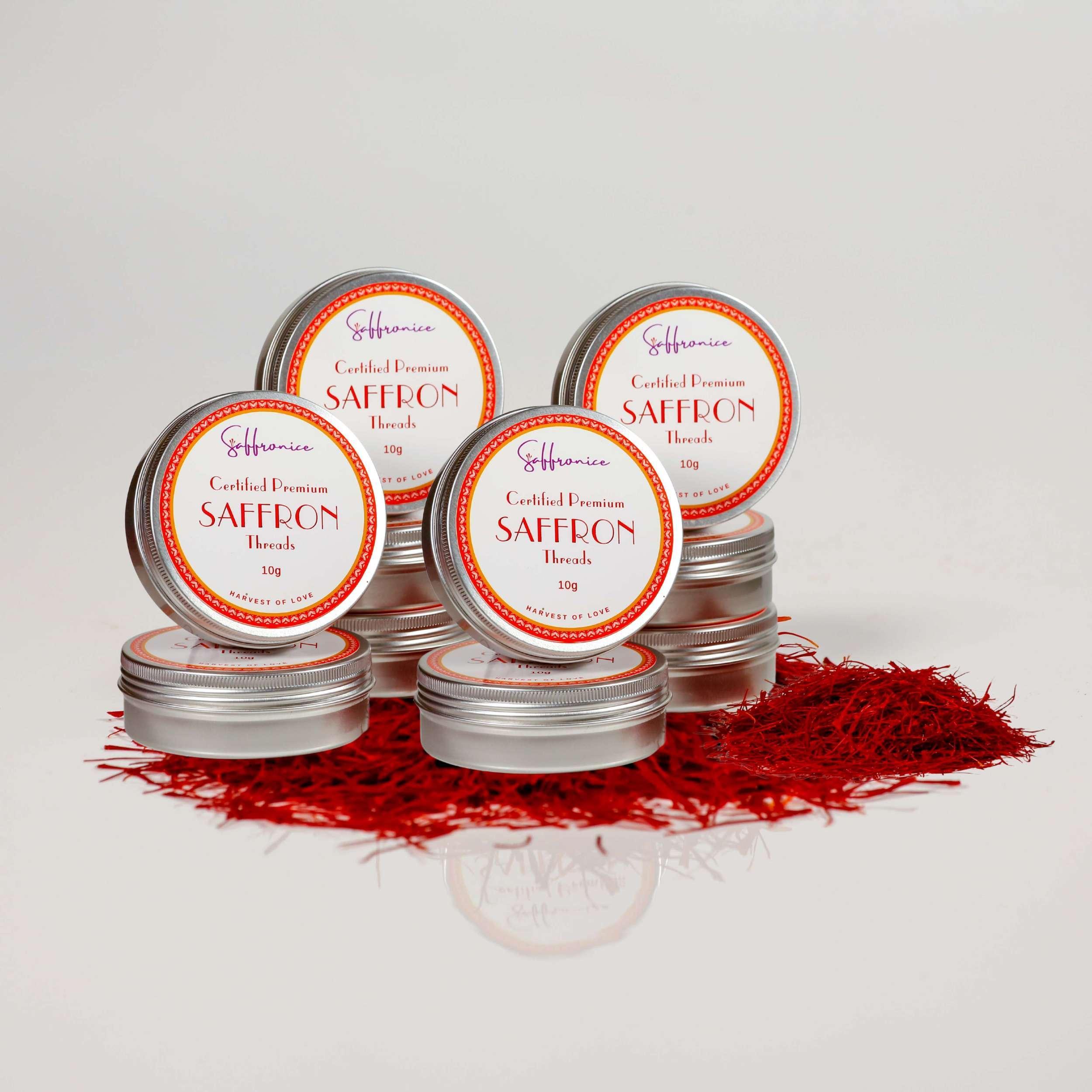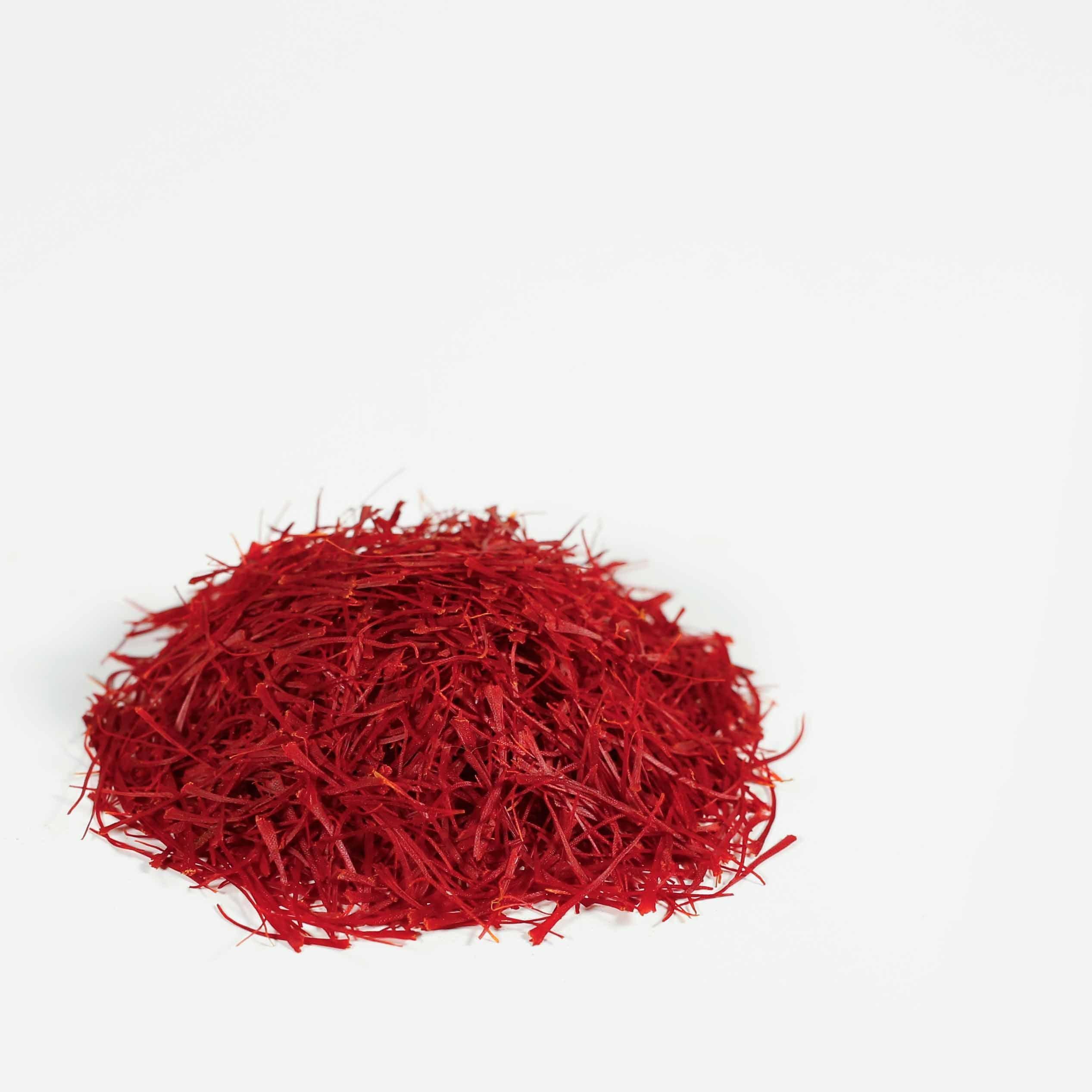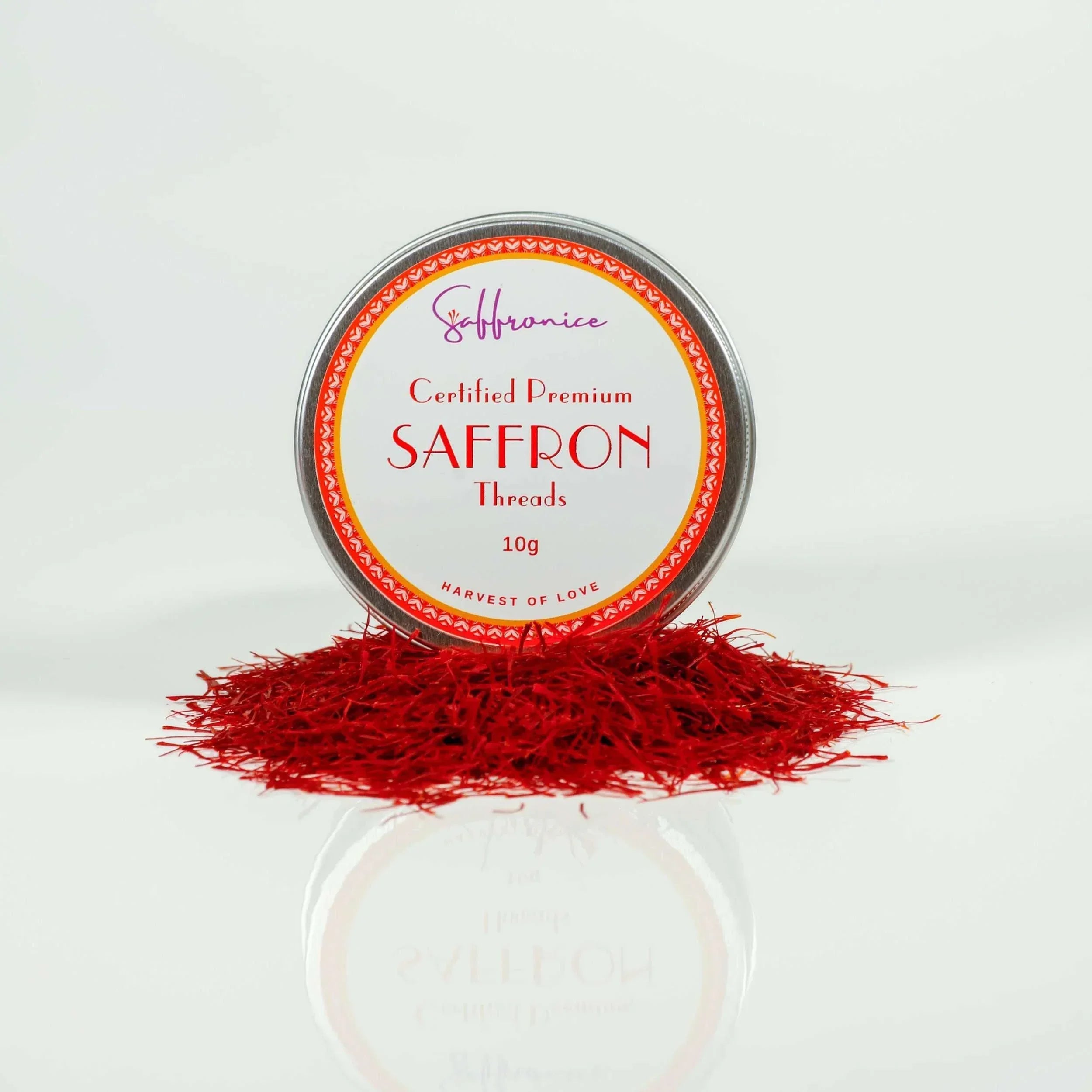There are a few things to look for when it comes to selecting Saffron. Many fraudulent Saffron producers use tricks like colouring corn silk or safflower with artificial colour to fool the buyer into thinking they have obtained genuine Saffron. By following our tips below you can ensure you buy only high quality, authentic Saffron.
-
The Saffron Shape: It’s all about the shape! Your Saffron threads should be thicker at one end and thinner at the other, think a trumpet shape. Saffron is part of the Iris family, and each Saffron flower has 3 threads, and, like a trumpet, the threads taper to be thinner at the end. Genuine Saffron will be this shape;

- Saffron Aroma - Genuine Saffron has a distinctive aroma, it’s flowery and earthy. It should smell strong but not overpowering and have a slightly sweet/bitter aroma profile to it. It’s a complex aroma but rather subtle if paired with other herbs, Saffron will not overpower a herb blend.
-
Saffron Colour - The bio-component responsible for Saffron gorgeous colour is Crocin, and there’s a key way to determine if your Saffron is of the highest quality by testing how the stigma behaves in water. Take a small plate and fill it with room temperature water. Drop a couple of threads into the water. Genuine Saffron will sit on top of the water for a few minutes until it begins to absorb the water, after 10-15 minutes the Saffron will begin to submerge beneath the surface to the middle
or sink to the bottom. Faux-Saffron will immediately sink, or bleed out any artificial colour - or maybe both! - The taste of Saffron - Given how closely the sense of taste is to the sense of smell it makes perfect sense that the taste of genuine high-quality Saffron is complex and a mix of sweet and bitter flavours.
A couple of extra tips about Saffron that will help you to buy only the best. Saffron has over 400 bio-components, each high in antioxidants.
The main components are;
- Safranal (responsible for the aroma)
- Crocin (responsible for the colour)
- Picrcrocin (responsible for the distinctive sweet/bitter flavour)
The closer to the date harvested, the more bitter the Saffron will taste, as it ages the sweetness blossoms. Similarly, the closer to the date harvested, the stronger the aroma and the weaker the colour. As it ages the aroma mellows and the colour blooms.
You can learn more about how to avoid fake Saffron in 2021 with our in-depth video here


